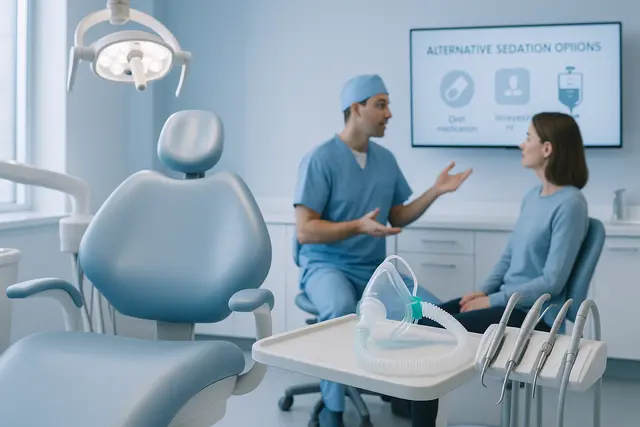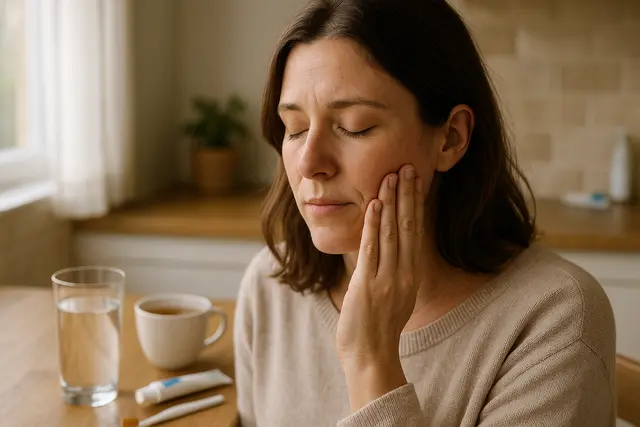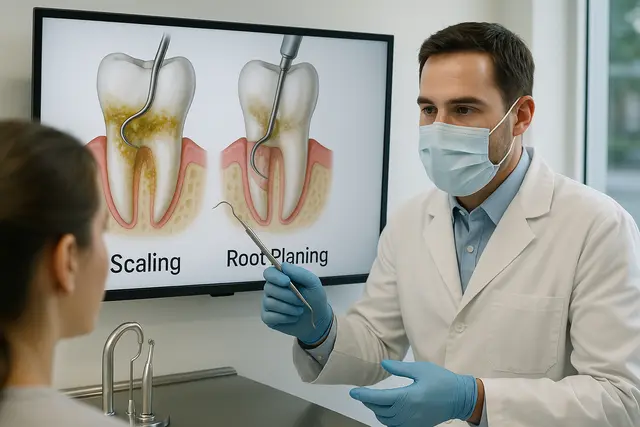General Dentistry
6 min read
Jul 04, 2025
Why Don’t Dentists Use Nitrous Oxide Anymore? Experts Explain the Decline
For decades, nitrous oxide, better known as laughing gas, was a staple in dental offices, helping anxious patients breeze through procedures with a sense of calm and a slight giggle. But lately, you might’ve noticed it’s not offered as often as it once was. So why don’t dentists use nitrous oxide anymore? Is it outdated, unsafe, or just outshined by something better?

You’ve probably heard of nitrous oxide. Maybe you’ve even breathed it in at some point through that little mask that fits snugly over your nose during a dental procedure. It’s often referred to as “laughing gas,” and for decades, it was the go-to choice for helping patients chill out during their visit. But lately, you might have noticed something: many dentists don’t use nitrous oxide anymore, or at least not as often. So, what happened? Why the change? Let’s explore the reasons behind the shift and see where sedation in modern dentistry is headed.
Nitrous Oxide in Dentistry: A Quick History of Laughing Gas
Nitrous oxide has been used in dentistry for well over a century. It earned its nickname, laughing gas, for the slight euphoria it can trigger in patients, just enough to take the edge off a dental procedure without knocking you out cold. Administered via a small mask, the gas is colorless and easy to inhale, and its effects wear off quickly. For a long time, it was considered a safe and effective sedation method, especially for kids and adults with mild dental anxiety.
But as modern dental care evolved, so did the options available for keeping patients calm and comfortable. While nitrous oxide remains a recognizable name in the field of dentistry, its status as the top choice for sedation is changing fast.
Modern Dentistry Has Changed the Game
Let’s be honest, dentistry has come a long way. Today’s dental offices are not the scary places many of us grew up dreading. Modern dental technology offers more control, less discomfort during dental procedures, and faster recovery times. With that shift, dentists and patients have started looking for sedation techniques that match the pace and precision of modern dentistry.
For more complex procedures, nitrous oxide may not be enough. It provides a mild state of relaxation, but not deep sedation. That’s fine if you're getting a simple cleaning or filling. But for surgeries, implants, or anything more involved, dentists use intravenous (IV) sedation or oral sedation that can offer deeper calm and even full memory loss of the procedure.
Why Dentists Use Alternative Sedation Options
One of the big reasons behind the decline in the use of nitrous oxide in dental practices is the rise of other, more powerful sedation options. IV sedation, for instance, delivers a stronger sedative directly into the bloodstream, offering a deeper and more predictable level of relaxation. Oral sedation, a pill you take before your visit, is another popular choice, particularly in family dentistry and for patients with severe dental anxiety.
These sedation methods allow for more extensive work to be done in one visit. That means fewer trips, less stress, and better patient comfort overall. Many dentists may also feel that these newer approaches offer better safety and control, especially when working with anxious or medically complex patients.
Some Dentists Still Use Nitrous Oxide, But Less Often
It’s worth noting that nitrous oxide is still used in dentistry. In fact, some dental professionals still use nitrous oxide as a preferred sedation option for certain procedures. Pediatric dentistry especially leans on laughing gas for short, low-stress treatments. It’s considered safe, wears off quickly, and doesn’t require a long recovery time. That makes it a great fit for younger patients or adults with mild anxiety during dental procedures.
However, even in those cases, the level of nitrous required can vary, and not every patient responds the same way. Plus, with other sedation techniques gaining popularity, many dental professionals are moving away from nitrous oxide simply because there are more flexible choices now.
Environmental Concerns and the Greenhouse Gas Factor
Here’s a twist most people don’t think about: nitrous oxide is a greenhouse gas that contributes to global warming. Yes, really. It’s about 300 times more potent than carbon dioxide when it comes to trapping heat in the atmosphere. As healthcare, including dentistry, becomes more eco-conscious, some providers are choosing to move away from nitrous oxide due to its environmental impact.
While it’s not the primary reason many dentists don’t use nitrous oxide much anymore, it’s certainly one more nudge in that direction. In an industry where every little change can make a difference, being green matters.
The Downside of Laughing Gas for Some Patients
Although laughing gas is considered a safe sedative and has helped millions, it’s not without its side effects. Patients may experience nausea and vomiting, especially if they’ve eaten recently. Others may feel dizzy or disoriented, which can make the dental experience more uncomfortable rather than less.
In patients with severe dental anxiety, nitrous oxide often doesn’t go far enough. These patients need a deeper sense of sedation, something that blocks memory or offers a stronger sense of detachment. That’s where IV sedation or general anesthesia comes in. These stronger methods can create a more controlled and tailored experience, particularly for those who struggle with anxiety during dental procedures.
Why Many Dentists Don’t Use Nitrous Oxide Anymore
So, why don’t dentists use nitrous oxide anymore as much as they used to? It comes down to several factors:
It’s less effective for complex procedures
Other sedation techniques offer more control
Some patients react poorly to it
It’s a greenhouse gas
Dental professionals are shifting to more modern, patient-tailored solutions
In short, it’s not that nitrous oxide has disappeared; it’s just not the one-size-fits-all answer it once was. Many dentists use it selectively, and many patients may still request it, especially for simpler treatments. But overall, the trend is moving away from nitrous oxide toward options that offer deeper sedation, fewer side effects, and more environmentally friendly choices.
The Role of Sedation in Today’s Dental Care
Sedation is still a critical part of delivering comfortable dental care. Whether it’s to ease dental anxiety or simply make a dental procedure more tolerable, sedation dentistry is about patient comfort. The good news is, there’s no shortage of options. Between nitrous oxide, oral sedation, IV sedation, and general anesthesia, today’s dental professionals can match the sedation to the situation.
And for patients who are nervous, it helps to know that your dentist isn’t stuck in the past. Sedation options have come a long way, and that means you can have a dental experience that’s far less stressful than what your parents, or even you, might remember.
Final Thoughts: What Should Patients Know?
If you’re wondering why nitrous oxide is less common in dentistry these days, you’re not alone. Many patients are surprised to find their local dentist doesn’t offer it, or offers it only in specific cases. The shift isn’t about cost-cutting or trends. It’s about giving you the best experience possible. Dental technology has evolved, and so has our understanding of sedation and patient care.
That said, laughing gas is still safe and still helpful in the right circumstances. So if you’re nervous, ask your dental professional about your sedation options. There’s no shame in needing help relaxing. Whether it’s nitrous oxide, oral sedation, or IV, the goal is always the same: to help you feel calm, cared for, and ready to smile again.
And hey, if you still want to call it laughing gas, we won’t stop you.
Why Don’t Dentists Use Nitrous Oxide As Much Anymore?
Dentists use nitrous oxide less frequently today because newer sedation options offer deeper, more controlled relaxation for complex procedures. IV and oral sedation allow dentists to complete more extensive work in one visit and are often more effective for patients with moderate to severe dental anxiety. Additionally, concerns about side effects, inconsistent effectiveness, and environmental impact have contributed to the decline in nitrous use.
Is Nitrous Oxide Still Used in Dentistry?
Yes, nitrous oxide is still used, but more selectively. It’s often chosen for short, simple procedures, especially in pediatric dentistry or for patients with mild anxiety. It’s quick to take effect, wears off rapidly, and doesn’t require a long recovery. However, due to its limitations and the availability of more advanced sedation methods, many dental practices now reserve nitrous oxide for specific cases.
What Are the Alternatives to Nitrous Oxide for Sedation?
Modern alternatives to nitrous oxide include oral sedation and IV sedation. Oral sedation involves taking a prescribed pill before the procedure to induce relaxation, while IV sedation provides a deeper, more controlled level of sedation through a vein. These methods are preferred for patients with significant dental anxiety or those undergoing longer, more involved procedures, offering better comfort and fewer interruptions.
Are There Environmental Concerns With Using Nitrous Oxide?
Yes, nitrous oxide is a potent greenhouse gas, about 300 times more impactful than carbon dioxide in terms of global warming. While not the main reason for its decline, many dental providers are becoming more eco-conscious and choosing other sedation methods with less environmental impact. It’s one more reason some dentists are moving away from using nitrous as a default option.
Read Next
Related Posts

General Dentistry
How to Stop Nerve Pain in Tooth: Fast Relief That Works
Tooth nerve pain can be one of the most intense and disruptive types of discomfort. It often strikes without warning and makes everyday activities like eating, drinking, or even talking feel unbearable. Understanding what causes this pain and how to manage it effectively is key to getting fast relief.
4 min read
Sep 15, 2025

General Dentistry
Can a Sinus Infection Make Your Jaw Hurt? Understanding the Connection
Jaw pain can be unsettling, especially when it seems to appear out of nowhere alongside a stuffy nose or headache. Many people are surprised to learn that sinus infections can cause discomfort that feels like it’s coming from the jaw. Understanding the connection between your sinuses and jaw pain is key to getting the right treatment.
5 min read
Sep 15, 2025

General Dentistry
What Is SRP in Dentistry? A Complete Guide to Scaling and Root Planing
When it comes to dental health, most people think regular cleanings are enough to keep their smile safe. But sometimes, what’s happening below the gumline needs more attention. Scaling and root planing (SRP) is a treatment designed to address gum disease at its source, protecting both your gums and teeth from long-term damage.
5 min read
Sep 10, 2025
Don’t have time to research every dentist around you?
See why 30k+ patients trusted us